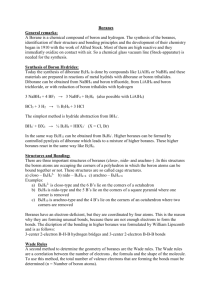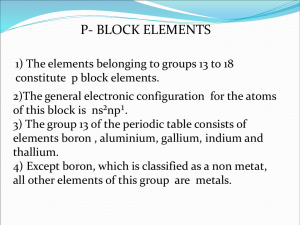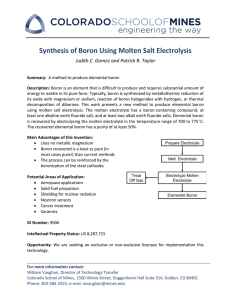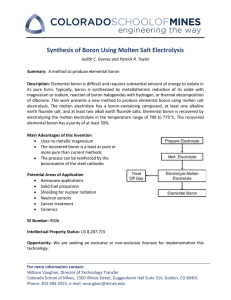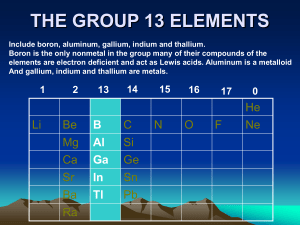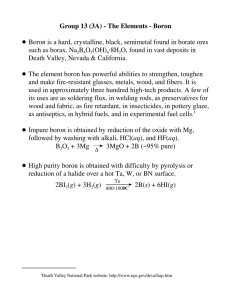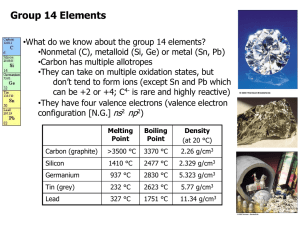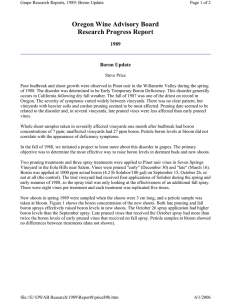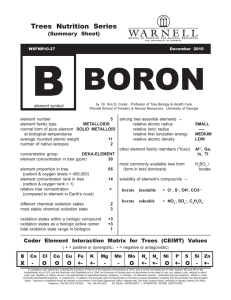The Chemistry of Boron
advertisement
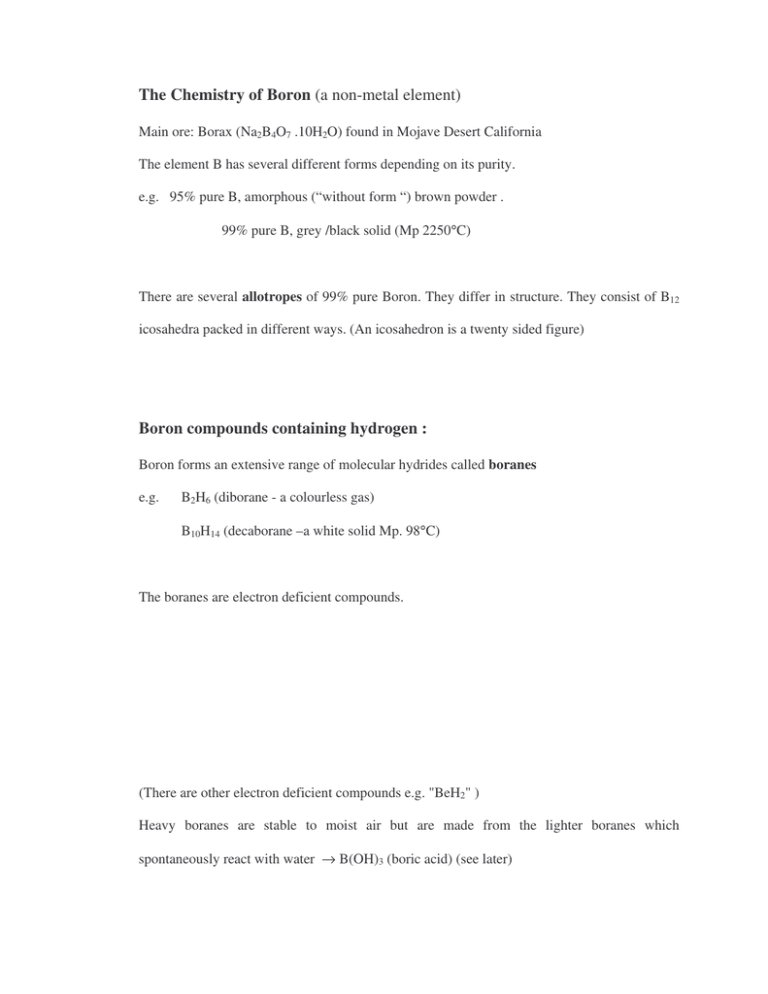
The Chemistry of Boron (a non-metal element) Main ore: Borax (Na2B4O7 .10H2O) found in Mojave Desert California The element B has several different forms depending on its purity. e.g. 95% pure B, amorphous (“without form “) brown powder . 99% pure B, grey /black solid (Mp 2250°C) There are several allotropes of 99% pure Boron. They differ in structure. They consist of B12 icosahedra packed in different ways. (An icosahedron is a twenty sided figure) Boron compounds containing hydrogen : Boron forms an extensive range of molecular hydrides called boranes e.g. B2H6 (diborane - a colourless gas) B10H14 (decaborane –a white solid Mp. 98°C) The boranes are electron deficient compounds. (There are other electron deficient compounds e.g. "BeH2" ) Heavy boranes are stable to moist air but are made from the lighter boranes which spontaneously react with water → B(OH)3 (boric acid) (see later) Diborane is prepared from the simplest borane anion (boride) called Sodium Borohydride NaBH4. Both diborane and sodium borohydride are important reagents in organic chemistry, NaBH4: good reducing agent (source of H-) B2H6 : adds to alkene bonds in a reaction called hydroboration in which it converts alkenes into alkanes via an anti –markownikoff addition . Lewis structures (see your Lecture Notes) BF3 and BCl3 are widely used to promote organic reactions because of their Lewis acidity. They react to form adducts with many organic molecules e.g. (CH3CH2)2O.BF3 . All the Boron trihalides (except BF3 see below) are hydrolysed in a violent reaction – e.g BCl3(g) + 3H2O(l) → B(OH)3 + HCl BF3 is unusual because it is only partially hydrolysed (some B-F bonds remain in the product) 4BF3 + 6H2O → 3H2O+ + 3BF4- + B(OH)3) BF4- + H2O → [BF3OH ]- + HF. Why is B(OH)3 called boric acid ? B(OH)3 + H2O → H+ [B(OH)4]Boric acid accepts electrons. It is LEWIS ACID. B has a diagonal relationship with Si Similarities 1. Semi-conducting non-metals . 2. Form oxygen – bridged structures . 3. Form halides that are hydrolysed in water (exception BF3). 4. B2O3 and SiO4 have acidic character. 5. Borates- contain planar BO3 units (or less commonly tetrahedral BO4 units) which share oxygen atoms to make chains or rings. Sometimes boron oxides are added to silica because their structures are similar. (When silicates are heated the compound melts. The structure alters and on cooling an amorphous glassy material called 'fused silica' is formed. If 16% B2O3 is added this gives rise to borosilicates (“pyrex”) .) 6. BH3, SiH4 are volatile and flammable. Differences: 1. Boron hydrides –structurally unique. silicon hydrides – Silanes are chain-like e.g. SinH2n+2. 2. Oxidation states are different
